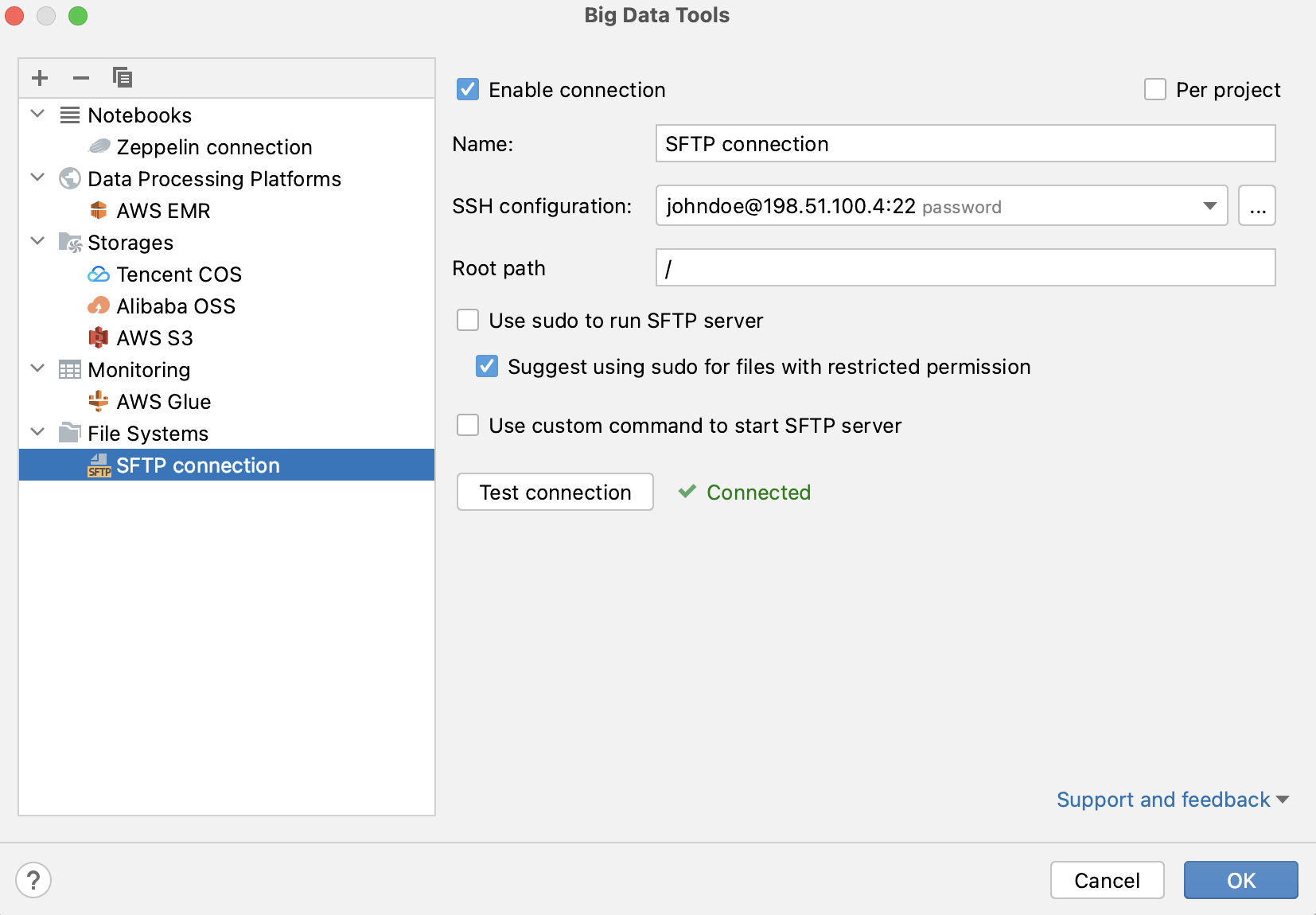SFTP
Connect to an SFTP server
In the Big Data Tools window, click
and select SFTP.
In the Big Data Tools dialog that opens, specify the connection parameters:

Name: the name of the connection to distinguish it between the other connections.
SSH configuration: select an SSH configuration, which contains the needed server address and credentials.
Root path: a path to the root directory.
Optionally, you can set up:
Enable connection: clear the checkbox if you want to disable this connection. By default, the newly created connections are enabled.
Use sudo to run SFTP server: select if your target server requires root access. With this option selected, you will be prompted to enter a root user password while connecting to the SFTP server.
Use custom command to start SFTP server: select if you want to customize the server startup command. With this option selected, the following parameters become available:
Command to start SFTP server: enter a path to the SFTP server or provide SFTP connection options. If the Use sudo to run SFTP server option is selected, you can leave the field empty and let DataSpell detect the path to the SFTP server. Click Test connection to view the detected path.
Suggest using sudo for files with restricted permission: with the option selected, DataSpell will ask if you want to use the sudo password each time you try to read or write files with restricted access. If not selected, accessing such files will result in the "Permission denied" error. The option is available if Use sudo to run SFTP server is not selected.
Use password from SSH configuration: select if, for accessing files, you want to use the password provided by the selected SSH configuration. If the password is empty or if Authentication type of the SSH configuration is not Password, DataSpell will require you to enter a password while running the server and accessing files.
The option is available if Use sudo to run SFTP server or Suggest using sudo for files with restricted permission is selected.
Command to run sudo: customize the sudo command; for example, you can enter the full path to sudo or provide options such as
sudo -k.
Once you fill in the settings, click Test connection to ensure that all configuration parameters are correct. Then click OK.